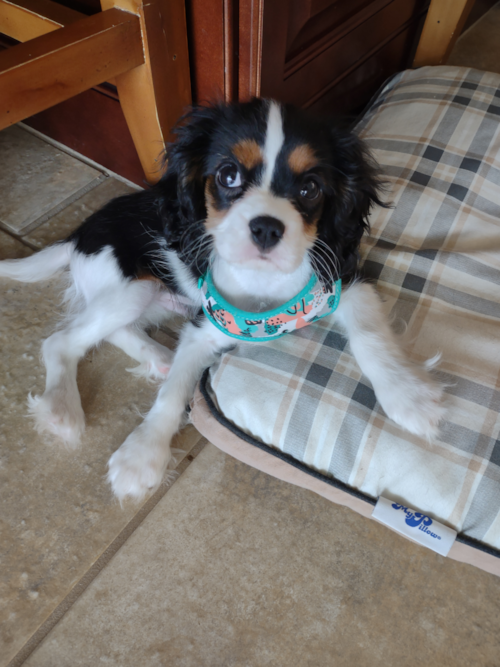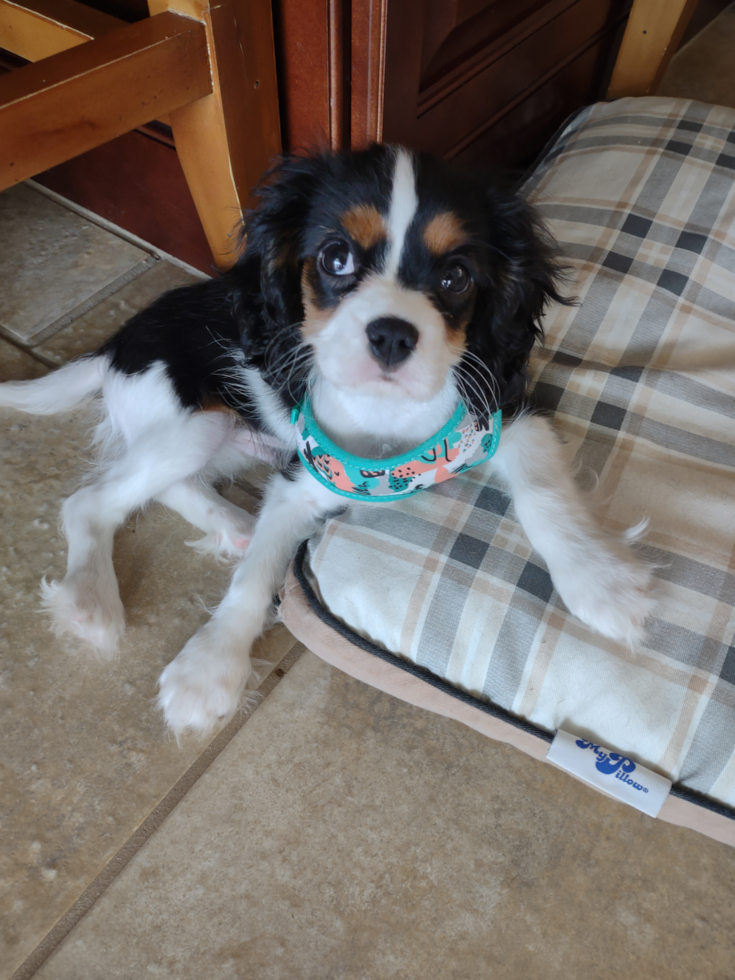Cavalier King Charles Spaniel
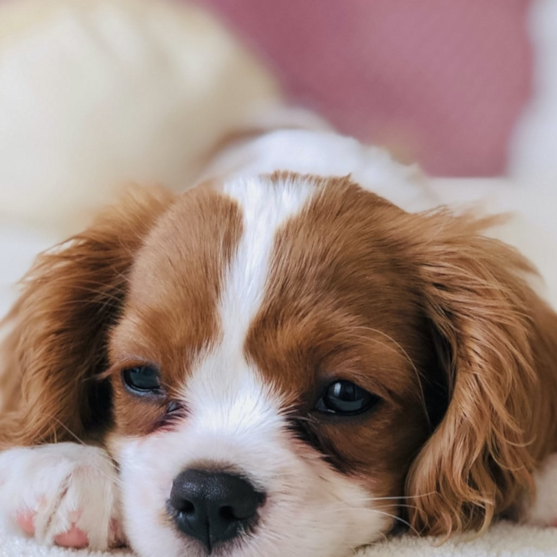
A charismatic fur baby and a glamorous little companion pet, the Cavalier King Charles Spaniel is a most valuable addition to any home. These happy-go-lucky puppies are driven to spread joy and make friends wherever they go. They attach to their humans like magnets and are quite fond of being included in every family activity. Cavalier spaniels love the outdoors, especially if beach games or hikes are involved. Their favorite hobbies include exploring, cuddling, camping, swimming, being the center of attention, and cuddling some more.
Characteristics
- The Cavalier King Charles spaniel is part of the American Kennel Club’s Toy Group
- Originating from 17th century England, the Cavalier King Charles spaniel was named after the Toy spaniel’s biggest fan – King Charles I
- With their ever-rising popularity in both the United States and the United Kingdom, Cavalier spaniels may soon become the world’s most loved dog breed
- Cavalier King Charles spaniel puppies are very bright and easy to train
- Toy-sized and easy going, Cavalier spaniels are a good fit for apartment living
- Well-behaved, non-aggressive, and gentle, the Cavalier King Charles spaniel is a great pet for families with smaller children
- Cavalier King Charles spaniel puppies can be trained for therapy work
- Adventure-oriented and eager to explore the world, the Cavalier King Charles makes an excellent hiking partner
- As long as they are with their favorite humans, Cavaliers can adapt to any type of lifestyle, be it active or relaxed
- The King Charles spaniel is generally a very owner-attached dog that doesn’t do well when left alone
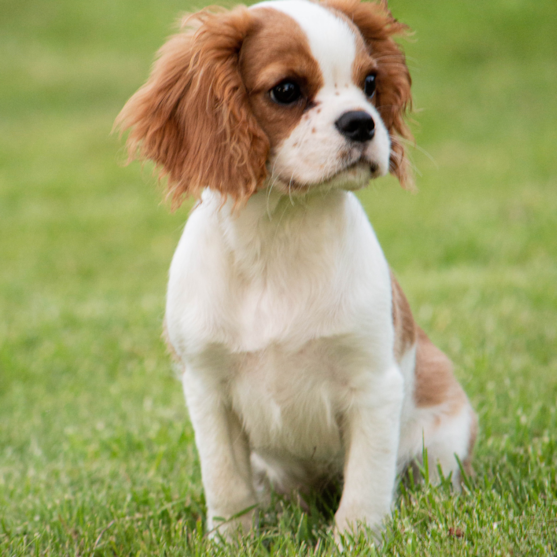
Appearance
The Cavalier King Charles spaniel, a perfect example of a gorgeous canine, enchants dog lovers with its elegant appearance and joyful disposition. As their official breed standard dictates, these toy-sized spaniel dogs should grow up to an average of 12 to 13 inches and weigh between 12 to 18 pounds for an adult Cavalier King Charles spaniel. As their beauty knows no limits, you should expect your little Cavaliers to charm you with their big round eyes, long floppy ears, and sweet puppy-like expression. Other features of the Cavalier King Charles spaniel include a sturdy build, a flat back, a conical muzzle, a slightly rounded face, and a long-feathered tail. Their coats have a straight to slightly wavy, soft, and silky texture.
Among the most popular Cavalier King Charles spaniel colors are:
- Blenheim Cavalier King Charles Spaniel – the coloring of the coat is with red or brown spots on a clear white background
- Black and Tan Cavalier King Charles Spaniel
- Tricolor Cavalier King Charles Spaniel – the coloring of the coat is with black or dark brown spots on a clear white background
- Ruby Cavalier King Charles Spaniel – the coloring of the coat is a solid ruby red color
Photos
Temperament
Cavalier King Charles spaniels have an excellent personality to impress with. They are a calm breed with a friendly disposition and a long list of hobbies. Among their favorite things to do is to hang out with their people, whether it’s on a hike, bike run, or on a couch. One of the best things about Cavaliers is their ability and willingness to mirror their owner’s wants and needs. Cavalier King Charles spaniel dogs are impartial to the type of lifestyle they are reserved in. They are just as happy to be partners in a life full of adventures as they are being their owner’s mediation companion.
Even though we strongly believe that all dogs are perfect, we can’t help but side a little bit more with the sweet Cavalier spaniel. These dogs are as generous in affection as they are in loyalty. They are unfamiliar with aggression and they get along with just about everything that moves - apart from the occasional squirrel that they might want to chase. They make excellent play mates for children and wonderful fur siblings for other pets in the house.
Although their dashing looks might suggest that they are fragile and mellow, under the cute Cavalier King Charles spaniel appearance lies an athletic, hardy dog with true canine strength. These dogs are true artists in sporting competitions. They are famously good at agility, rally, fly-ball, and obedience sports. Sporting skills aside, Cavalier King Charles spaniels are also good swimmers, great hikers, and fun-loving adventure seekers.
Care
Cavalier King Charles Spaniel Grooming
As dogs that shed occasionally, Cavalier King Charles spaniels have moderate grooming needs. They require a quick brushing or combing every one or two days and a bath every month or so to keep their coats shiny and silky. If they shed more during certain seasons, it is recommended to brush them daily to avoid tangles or matting. Nails that aren’t filed down naturally should be trimmed after every bath. If their nails are kept too long, they may cause discomfort or possible injury. Their ears should be checked and cleaned at least weekly. As most small dogs, Cavalier spaniels may be prone to dental issues. To avoid tartar build-up and other possible issues, it is recommended to brush their teeth as often as three times per week.
Cavalier King Charles Spaniel Exercise Needs
Although some may be more energetic than others, Cavalier King Charles Spaniels are not considered an active dog breed. They do best with a routine of one or two daily walks and some interactive games while indoors. Stimulating their minds is as important as exercising their bodies. Cavaliers should be provided with treat puzzles that can keep their minds engaged. Because they are big fans of outdoor activities, it is recommended to take them on play dates at the dog park at least once every week or so.
Cavalier King Charles Spaniel Health
The Cavalier King Charles Spaniel is generally healthier than most small dog breeds. Certain conditions that these dogs may develop include ear infections, dental problems, and allergies. Cavalier spaniels are also prone to obesity, which is why they should be kept on a strict high quality dog food diet.
Cavalier King Charles Spaniel Life Span
The average lifespan of a Cavalier King Charles spaniel is 9 to 14 years, although most live well past the latter. To increase the Cavalier King Charles spaniel life expectancy, it is recommended to always chose a diet of high-quality dog food, to keep up with the breed’s exercise needs, and to provide a warm and stress-free growth environment.
Cavalier King Charles Spaniel Training
Cavalier King Charles spaniel puppies are exceedingly bright and fond of learning. Whether it’s their basic puppy commands or advanced tricks, these brilliant puppies are quick to learn whatever they are taught.
Socializing Cavalier spaniel puppies should be a walk in the park, as they are naturally open to making friends among humans and fur-babies alike. Leash training might pose some difficulties when done outdoors, as these puppies have an instinct to chase smaller animals.
Because they are an athletic and sporty breed, Cavalier King Charles spaniels are easy to train for dog sports of agility and rally. They are also quite good at obedience training and fly-ball sports.
As they can become overly attached at times, Cavalier spaniel puppies may require extra training in the lesson of independence. Prone to separation anxiety, these puppies should be given proper training before being left alone for the first time.
History
The Cavalier King Charles Spaniel, a breed of magnificent versatility, is believed to be a descendent of toy spaniels. During the 14th century, toy spaniels were among the most popular dogs in England, being especially popular with the artists and writers of that time. These adorable small-sized dogs have been represented in various art forms such as literature, paintings, and poetry. Paintings from the Renaissance era depict spaniel dogs alongside noblemen, ladies, and members of the royal family.
Although there have been many types of spaniels over time, the Cavalier King Charles is believed to have appeared at the beginning of the 17th century. King Charles I, the King of England at that time, took a great liking to the small spaniels, reserving several puppies himself. King Charles I and his heir King Charles II are said to have been responsible for defining the breed into the beautiful spaniel that we know today as Cavalier King Charles spaniel. After King Charles’ demise, the spaniel breed that was named after him was almost faced with extinction. Luckily, the houses that remained loyal to King Charles I, took to preserving the breed that was once so dear to his majesty.
The Cavalier Spaniel reached the shores of the United States around the 19th century, quickly becoming a favorite among aristocratic families. The Cavalier King Charles spaniel joined the Toy Group of the American Kennel Club in 1995 and was officially recognized as a distinct breed of the spaniel type. Today, Cavaliers are among the most popular dogs in the United States. They often appear in movies, cartoons, and on the field of dog sporting competitions.



